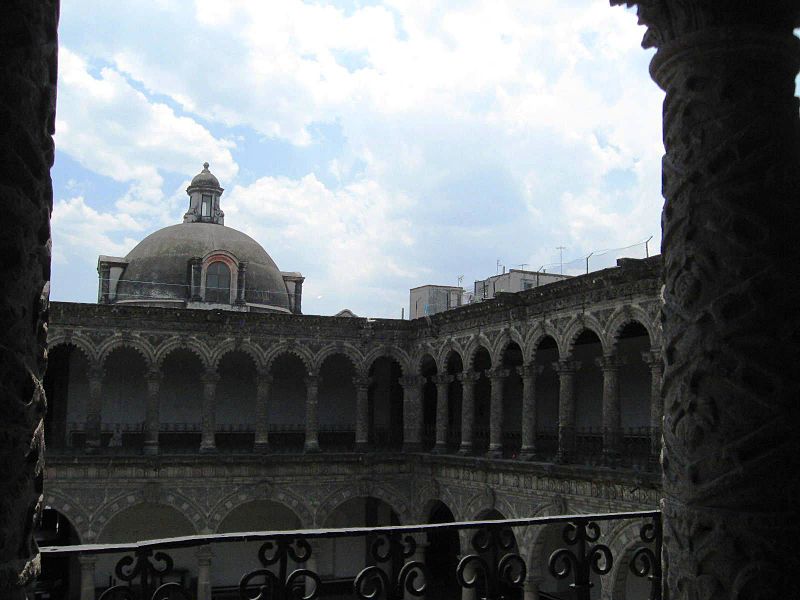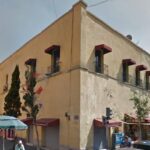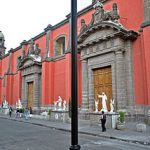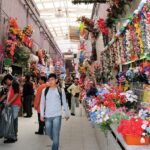
_
La Merced Cloister in the Centro Historico is the last remaining part of the old Merced monastery. It lends its name to the giant marketplace in the Centro-east, and to the broader Barrio La Merced. It was long believed to be the most ornate and even luxurious of monasteries in the colonial city. Most of it was demolished in the aftermath of the Reform Laws of the 1860s. The cloister is the one exception and remains today as a monument to this rapidly receding period of the past.
The Royal, Celestial, and Military Order of Our Lady of Mercy and the Redemption of the Captives, i.e.; the Mercedarians arrived first to Guatemala. In 1582, a group of them visited the Viceroyal capital to research the possibility and necessity of a branch there. The order really resulted from the hundreds of years of conflict between medieval Spain and Muslim North Africa. There’s no lack of irony, then, in the existing cloister’s elaborate Mudejar style.
Upon establishing a permanent base in Mexico City, they began construction on this monastery in 1595 with the purchase of four contiguous properties in the City’s east. The first stone was laid in 1602. A chapel was completed soon after, and in 1634, a larger temple was begun. Construction on the main church lasted until 1654.
The cloister we see today was built between 1676 and 1703. It’s essentially the southwest corner of the larger complex. With the Reform Laws, the demolition of the Temple was ordered to make room for the City’s new market. That church was entirely gone by the end of 1862. The new market opened, but was not settled into its building until 1880. Today, it’s the Plaza Alonso García Bravo just to the north of the cloister. The market moved eastward to its present location in 1957.
At the beginning of the 20th century, the cloister again faced demolition. The era’s most famous painter, Dr. Atl (Gerardo Murillo), lived for some time within the cloister in order to prevent further loss. In 1927, he was instrumental to the opening of the Escuela Libre de Escultura y Talla Directa. Staff included Dr. Atl, the painter Nahui Ollin, sculptor Guillermo Ruiz and others. Atl’s chronicles of the time, and of painting and living there were published as an autobiography in 1950.
Today, the La Merced Cloister is a remarkable historical building. The fact that it’s still standing is, in itself , hard to believe. A visit to the surrounding streets is unforgettable, as the Merced neighborhood has never quite conformed to what generations of reformers and colonialists have demanded. It’s a vibrant commercial and cultural neighborhood, and one that must be experienced in any given lifetime.

0.04 kms.

0.05 kms.

0.26 kms.

The market for clothing, formal wear and evening wear in Mexico City's center.

One of the city center's most illustrious former convents is still a sight to see.

Just a few steps outside the south exits of the Mercado de Sonora...

La Merced is the classic, and some will argue, the only public market in Mexico City. If you miss out on this one, you're missing out on a lot!

An unassuming corner on Talavera street was home to one of New Spain's most fiery insurrectionists.